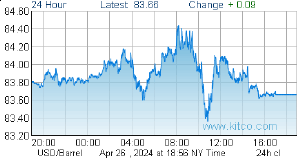1:30 pm Pacific
BullMarketRun.com
Just One Way This Pandemic May Change The World
There’s no question the Wuhan COVID-19 virus pandemic, and the wide-ranging responses to it by governments and the private sector including mainstream media across the globe, will change the world as we know it, just as 9/11 did nearly 2 decades ago.
From the implications of shutting down vast parts of economies to defend against the spread of a virus, to how we adjust to prepare for the next pandemic, the “Corona Crash” will have far-reaching consequences (bad and good).
One of those consequences – a bullish one for investors – will be in the metals space where Copper will likely become more sought-after than ever. Coming into this pandemic, Copper’s short-term and longer-term demand-supply dynamics were viewed very positively by most analysts. The red metal has taken a big hit this month due to the obvious sudden and sharp global economic slowdown triggered by the Wuhan virus, but there will be a powerful recovery (fueled in part by major new infrastructure projects governments will be embarking on, thanks to record low interest rates and the need to create jobs). And when this recovery kicks in, Copper’s rebound could be spectacular with the metal becoming more popular than ever due to its antimicrobial properties.
Robert Friedland, currently advancing some exciting Copper projects, hit the nail on the head recently when he commented that antimicrobial Copper would face increased demand as superbug viruses continue to emerge and pose threats to society in the years ahead.
“Every surface in every hospital will be now covered in Copper,” Friedland said, adding, “I don’t think anybody’s going on a cruise ship anytime soon until all surfaces are covered in Copper.”
What’s so magical about Copper when it comes to the defense it provides against viruses?

Copper Mountain mine in southern British Columbia.
Copper and its alloys are natural antimicrobial materials, and scientists continue to actively demonstrate the intrinsic efficacy of Copper alloy “touch surfaces” to destroy a wide range of micro-organisms that threaten public health. Ancient civilizations exploited the antimicrobial properties of Copper long before the concept of microbes became understood in the 19th century. In addition to several Copper medicinal preparations, it was also observed centuries ago that water contained in Copper vessels or transported in Copper conveyance systems was of better quality (i.e., no or little visible slime or biofouling formation) than water contained or transported in other materials.
When influenzas, bacteria like E. coli, superbugs like MRSA, or even coronaviruses land on most hard surfaces, they can live for up to several days. But when they land on Copper, and Copper alloys like brass, they begin to die within minutes are are undetectable within hours. “We’ve seen viruses just blow apart,” explains Bill Keevil, professor of environmental healthcare at the University of Southampton. “They land on Copper and it just degrades them.”
Keevil believes it’s time to bring Copper back in public spaces, and hospitals in particular (just as Friedland noted). In the face of an unavoidable future full of global pandemics, we should be using Copper in healthcare, public transit, and even our homes.
New Research Further Supports The Case For Copper
A new study (November 2019) has found that Copper hospital beds in the Intensive Care Unit (ICU) harbored an average of 95% fewer bacteria than conventional hospital beds, and maintained these low-risk levels throughout patients’ stay in hospital. The research was published in Applied and Environmental Microbiology, a journal of the American Society for Microbiology.
“Hospital-acquired infections sicken approximately 2 million Americans annually, and kill nearly 100,000, numbers roughly equivalent to the number of deaths if a wide-bodied jet crashed every day,” said co-author Michael G. Schmidt, PhD, Professor of Microbiology and Immunology, Medical University of South Carolina, Charleston.
Hospital beds are among the most contaminated surfaces in patient care settings. “Despite the best efforts by environmental services workers, they are neither cleaned often enough, nor well enough,” said Dr. Schmidt. Nonetheless, until recently, patient beds incorporating Copper surfaces – long known to repel and kill bacteria – have not been commercially available.
The Calama Hospital, located very close to the big Chuquicamata Copper mine in northern Chile, was a pioneer in the use of Copper because of its anti-bacterial benefits when it was built more than a decade ago.

Copper Long-Term Chart
Copper closed Friday, March 27, at $2.17, up from its low during this crisis of $1.97.
Historically, Copper has bottomed whenever RSI(14) has touched the 30% RSI(14) level on this 20-year monthly chart. RSI(14) is currently 34%, suggesting the metal is approaching an important low. Price support at $2 is very strong as demonstrated several years ago following a multi-year bear market (also a Fib. level on this chart).
In hindsight, when we look back at the Wuhan COVID-19 crisis, investors will much better appreciate the life-changing investment opportunities it created in the metals markets, just like after the Crash of 2008.
We know what Gold and Silver are going to do, but Copper will have its turn, too. At BMR we’ll be highlighting some of the most prospective Copper situations in the days and weeks ahead.

 BullMarketRun.ca
BullMarketRun.ca







